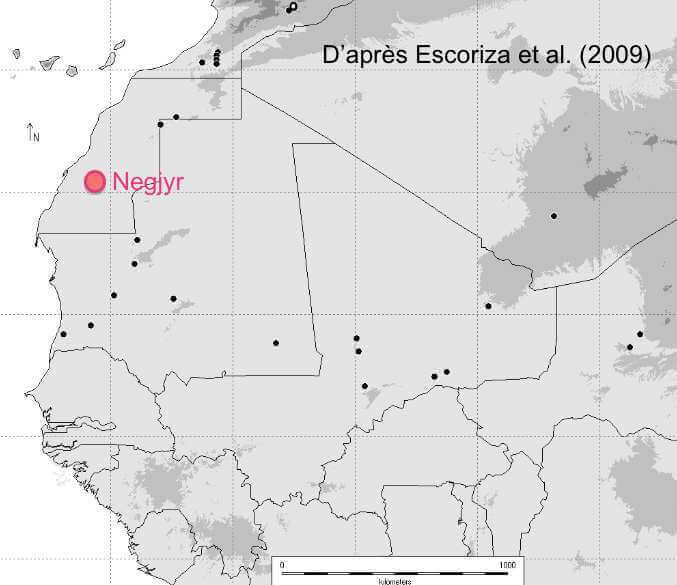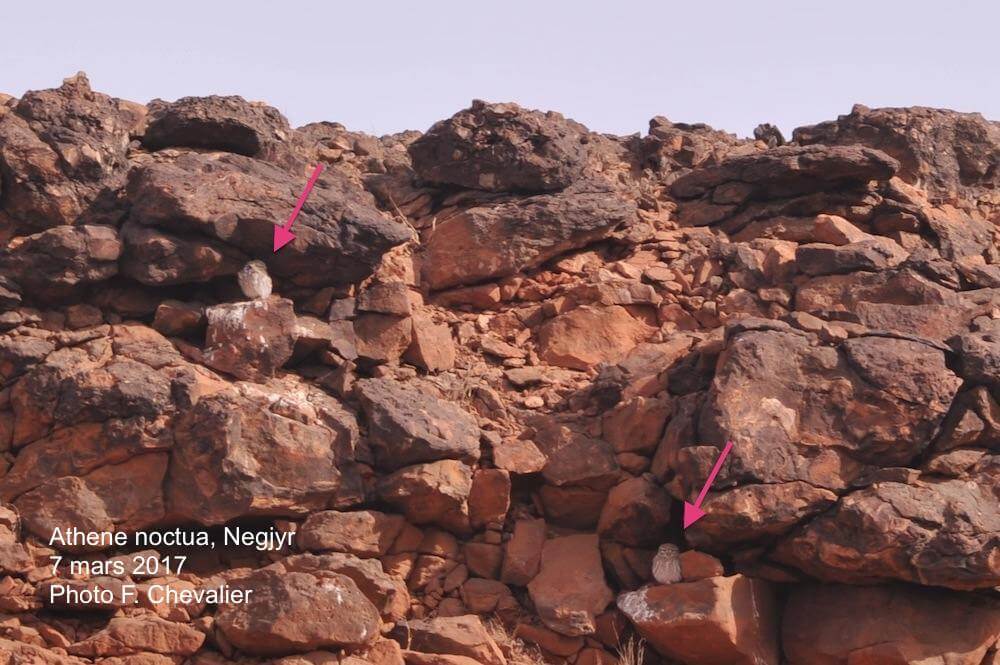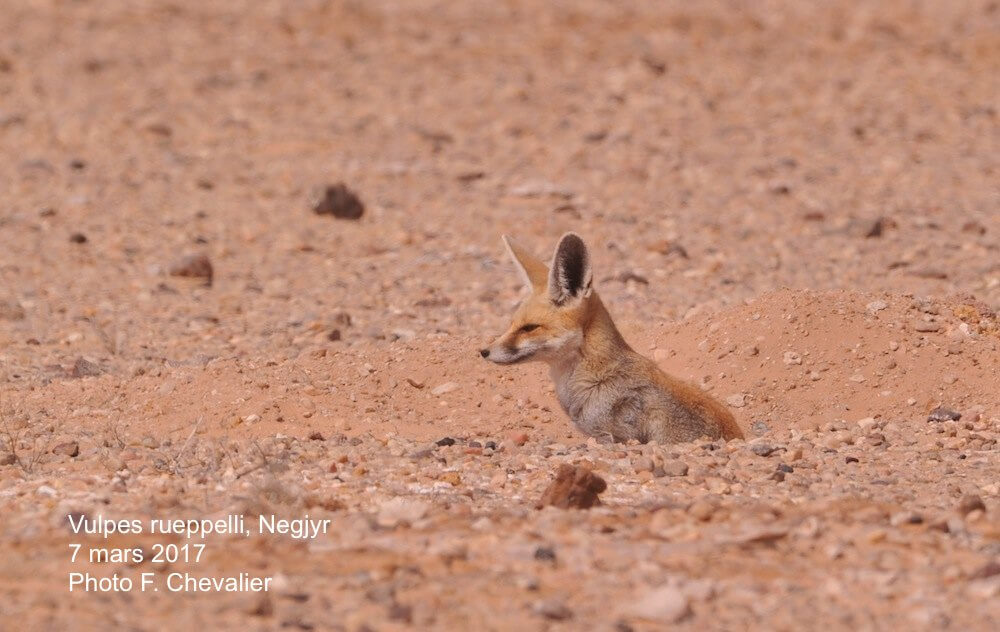Franck Chevalier, Jean Chevallier, Nicolo Calcagno et Sidi Hammia : ‘Dans le Negjyr (7 mars), les paysages sont toujours aussi splendides et invitent aux rêves’. Superbe observation de Renard famélique (Vulpes rueppelli – Rüppel’s Fox) au terrier. Nous avons également vu un couple de Chevêches d’Athéna (Athene noctua – Little Owl) mais surtout nous avons confirmé la présence de la Vipère des pyramides, connue également sous le nom d’Echide à ventre blanc (Echis leucogaster – White-bellied Carpet Viper ; photo J. Chevallier).
———–
Echis leucogaster
Range Description: This Sahelian species occurs continuously from Mauritania, the Gambia, Senegal and the north of Guinea and Guinea-Bissau, through Mali, northern Burkina Faso, Niger, northern Nigeria and Chad (Trape and Mané 2006). It occurs as relict, apparently isolated populations in Morocco, Tunisia, Algeria and Western Sahara, although a recent record from Tata in Morocco, almost equidistant between the previously-known localities, suggests that this snake’s distribution in this country may be more continuous, and hence « much wider than previously thought » (del Marmol Marin and Fernandez 2012). There may also be an isolated locality on the western border of Libya. It occurs from 100 to 1,000 m asl.
Population: In the northern Sahara this appears to be a rare species occurring only in isolated localities in the north of its range, however, it is often very abundant in the Sahel (Trape and Mané 2006). It has been considered possibly the rarest snake in Morocco (Aymerich et al. 2004), although it appears to be relatively abundant in at least one historical locality in this country, and the number of new reports of this viper has increased in recent years (del Marmol Marin and Fernandez 2012 and refs therein).
Habitat and Ecology: This ovoviviparous snake occurs in all habitats within the Sahel (Trape and Mané 2006), including semi-desert and dry savanna. It is nocturnal and feeds on small rodents and lizards (Trape and Mané 2006). In Morocco, the species is associated with artificial oases formed by irrigation channels in Acacia fields, in close proximity to cropland (del Marmol Marin and Fernandez 2012).
This is a highly venomous species that often occurs near human habitation, so is persecuted throughout its range, but this is not a major threat. It is not often collected in the north of its range as it is rare, but when a population is found, most of the individuals are usually removed.
(info from Wilms, T. et al. 2013)
—————
C’est la troisième espèces de vipère pour la région après la Vipère de l’erg (Cerastes vipera – Sahara Sand Viper) et la Vipère à cornes (Cerastes cerastes – Desert Horned Viper).
————–
References
- Aymerich, M. 2010. Vipère des pyramides ou Echide à ventre blanc (Echis leucogaster). (http://geres-asso.org/fiche_echis.html)
- Escoriza, D. ; Metallinou, M. ; Donaire-Barroso, D. ; Amat, F. & Carranza, S. 2009. Biogeography of the White-Bellied Carpet Viper Echis leucogaster Roman, 1972 in Morocco, a study combining mitochondrial DNA data and ecological niche modeling. Butll. Soc. Cat. Herp. 18: 55-68.
- Martínez del Mármol Marín, G. 2012. Echis leucogaster Roman, 1972. En: Martínez, G., León, R., Jiménez-Robles, O., González De la Vega, J. P., Gabari, V., Rebollo, B., Sánchez-Tójar, A., Fernández-Cardenete, J. R., Gállego, J. (Eds.). Moroccoherps. Anfibios y Reptiles de Marruecos y Sahara Occidental. Disponible en www.moroccoherps.com/ficha/Echis_leucogaster/. Versión 2/10/2012. Consulta realizada el 08 de marzo de 2017.
- Wilms, T. ; Wagner, P. ; Joger, U. ; Geniez, P. ; Mateo, J.A. ; El Mouden, E.H. ; Slimani, T. & Nouira, M.S. 2013. Echis leucogaster. The IUCN Red List of Threatened Species 2013: e.T197483A2488871. http://dx.doi.org/10.2305/IUCN.UK.2013-1.RLTS.T197483A2488871.en. Downloaded on 08 March 2017.



